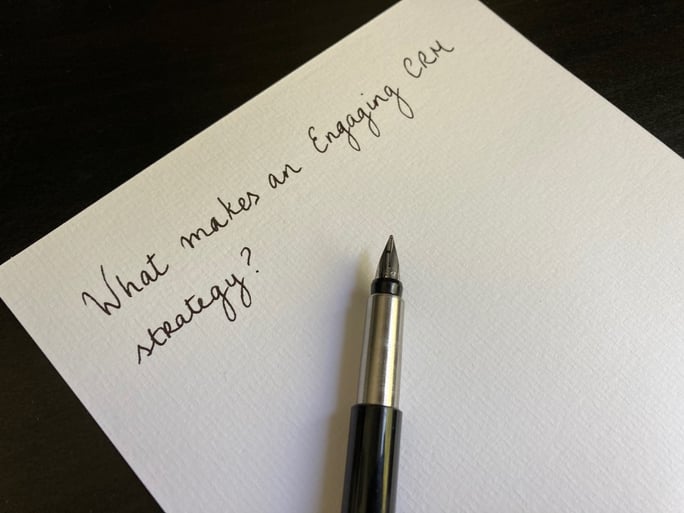
What makes a good CRM strategy?
Before I answer this question, why am I writing about this topic? Well, I’m Jeannine and I’ve worked in CRM and Loyalty for nearly ten years. In this time I’ve seen the good, the bad and the ugly. I’ve been lucky to work with clients who genuinely want to test and learn, so when results have been “bad” or “ugly” or even just “good," there’s been learnings to be had. I want to share some of these with you.
More than Timely Emails
“What makes an engaging CRM strategy?” If I responded to this question by what’s in my personal inbox, the answer would be obvious – just bombard your customers with lots of emails so they HAVE to listen, right?!
This is harsh, I know, there are lots of brands doing amazing work to engage their customers. COVID has brought out the best in some brands – who have shown their human side and used this to engage with their customers. A well thought out, timely email strategy that reacts to changes in customer behaviour is worth its weight in gold (I haven’t entirely flipped my views since starting work at Inkpact, a handwritten marketing company!) But, an engaging CRM strategy should be more than just timely emails. It should shine through in everything you do.

Five Key Principles
Here are the key principles my experience has taught me. Some of these experiences are from loyalty programmes, but you don’t have to have one to encourage loyal behaviour:
- Make a strong start. You never get a second chance at a first impression. And, you don’t have long to grab their attention. Welcoming a customer into your brand and educating them on who you are, what you stand for and how you’ll be doing things is important for all these reasons. If you don’t do this right, and early in your connection with them, your relationship will be short lived.
- Engage beyond the transactional. Create a relationship with your customers. If what you do, who you are and what you stand for don’t resonate, you’ll have a purely transactional relationship. You’ll always be competing just on price and be very easily replaced. Customers can always transact elsewhere, but they can’t always get what’s important to them elsewhere.
- Personalise. When you personalise to an individual customer level, and act upon likes and dislikes, you’ll see a huge uptick in engagement. This can be in how you communicate, what you say, how you reward them, and how you deliver your service.
- Don’t always make your customers jump through hoops, surprise and delight them. This can be for “no particular reason” (when there’s actually a very particular reason, e.g. they just spent over an important threshold) or it can be for a more customer facing reason – a personal or seasonal event. Both drive an amazing response - customers don’t mind why you’re being nice, they’re just happy that you are! If you do this right and measure it right, it has huge commercial value and drives broad engagement with your brand.
- Test. Measure. Learn. Adapt. If you don't do this, you won't learn anything!
Proving Success
In all my roles I’ve been responsible for building relationships between brands and their customers, achieving KPIs and ensuring the best ROI possible. Whether that be creating an emotional connection between customers and their insurance provider, or encouraging a customer to travel by train rather than by car, the principles above always apply. At Inkpact, I’m doing the same thing – using handwritten notes to connect brand and customer, and ensuring an amazing ROI.
Handwritten notes can be seen as a “fluffier element” of the marketing mix. Through proper campaign tracking, we see the commercial impact handwritten notes make to our clients’ bottom line. This is what I work with our clients to do. We take control groups, we run A/B split tests against emails, we use trackable links to understand traffic. This way, clients can tangibly understand the impact of what we do. Clients can see if they stopped working with us their repeat business would be 58% lower, or that sales would be 30% less. Across the board, our clients would see their open rate drop from 99%, to 20-30%. And, they’d have to work a lot harder to achieve it.
Final Words of Wisdom
Small things have an incremental impact. Surprising customers, treating them like you know them, making a good first impression; all, genuinely, make a big difference to your bottom line.
Jeannine Rafferty, Chief Customer Officer, Inkpact.

